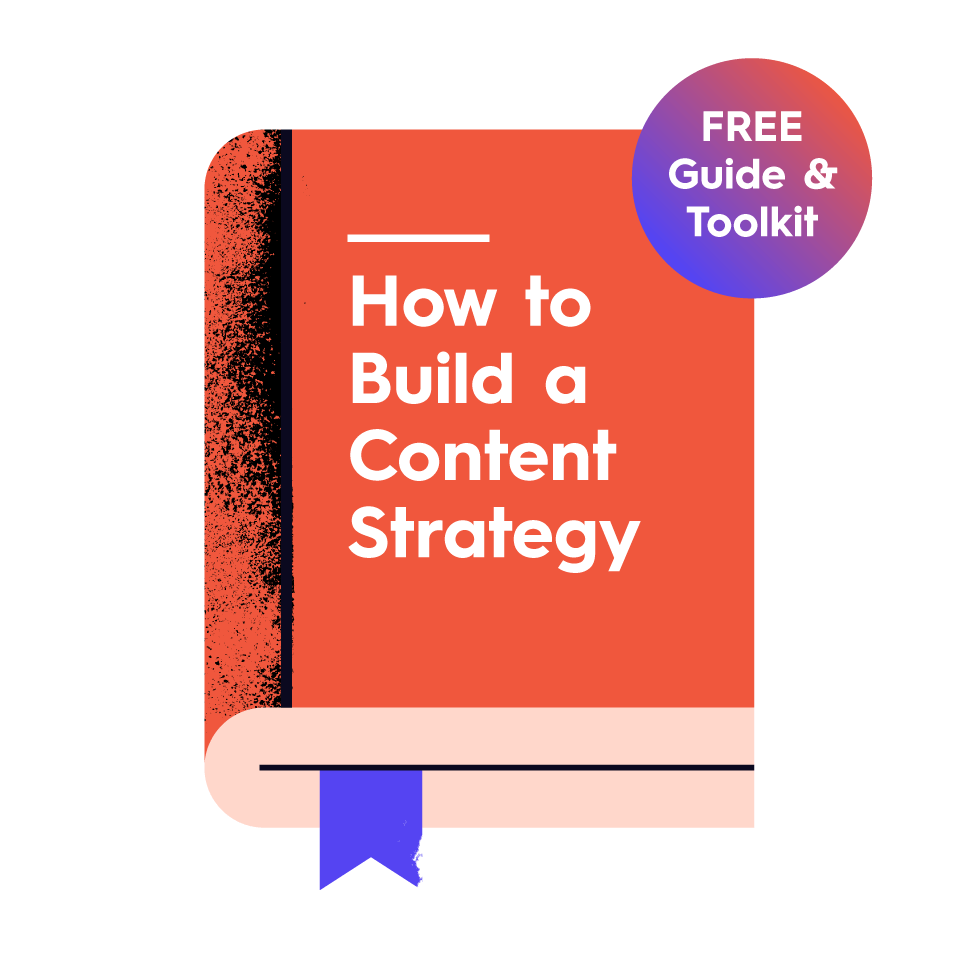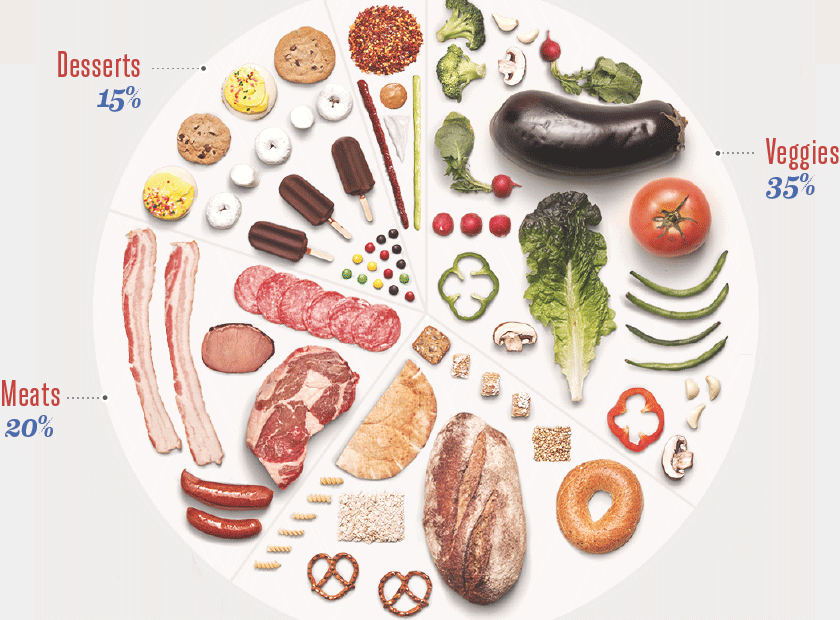Our partners often come to us with the same problem: They’re eager to establish a presence through their marketing blog by creating engaging content that will transform their audience into lifelong fans—but they don’t know exactly what type of content they should be publishing to achieve this.
We’ve faced this same challenge firsthand. What topics should you cover? What formats should you experiment with? What will make you stand out from your competition? Ultimately, the key to a successful marketing blog comes down to balance. Serve up a healthy mix of the right content, and you’ll attract—and keep—the people you want to build a relationship with.

How to Curate a Well-Balanced Marketing Blog
Through your marketing blog, you can tell your brand story in all sorts of ways to feed many different audiences. But arbitrarily creating this content won’t get the results you want. You need a clear strategy that supports your brand’s goals and serves your audience’s cravings.
We’ve found it can be helpful to think of your marketing blog content as a healthy meal. You need to give people what they need and want, but the balance is tricky. Give them too much junk and you lose credibility; serve too many dense thought leadership pieces and you put everyone to sleep. So how do you serve up the right stuff? Here, we break down what a healthy content diet looks like.
1) Meat (The Nourishing Stuff)
The goal of content marketing is to establish yourself as a trusted resource and build a relationship from there. This starts with establishing your expertise through thorough, high-value content.
What it looks like:
- Strategic research and analysis
- Data-based stories
- White papers, ebooks, guides, in-depth articles
The real meaty stuff is your cornerstone content—these are the big pieces that you can hang your hat on. It may be an “ultimate guide” to a topic you know well. It may be a surprising report that dispels a long-held industry belief. This is the big content that proves you know what you’re talking about, you’re invested in educating your audience, and you are a clear thought leader in your space.
How to make it:
- Create a hefty guide or ebook. See our tips to write, create, and design your ebooks, and take a look at these excellent ebook examples.
- Dig into your data. Here’s where to look for internal data, how to find stories in your data, and how to design visualizations correctly.
- Know the stories you want to tell. If you’re stumped for ideas, think about the key elements of your brand story: who you are, what you do, why you do it. Use our brand messaging template to identify the three main stories you want to tell, then consider what cornerstone content can help you communicate it.
Note: Having a strong brand strategy is crucial to create the right content strategy. If you haven’t locked down your brand strategy, focus on that first (and see our ultimate guide to building a brand strategy for more tips).
Example: We’ve created a library of ebooks, templates, and toolkits to help establish our expertise and empower people to do better content marketing.

2) Whole Wheat and Grains (The Filling Stuff)
People are hungry for useful content, and they want a steady diet to consume. That’s exactly what you can deliver with this type of stuff. Beyond the cornerstone content, it’s the smaller pieces that fuel people’s interest in your brand.
What it looks like:
- How-tos/tutorials
- Tips/articles on relevant topics
- Third-party guest posts
- Repurposed older content
One of the keys to a truly healthy marketing blog is publishing with a regular cadence. This type of content is ideal to help you stay connected and maintain a steady presence. It’s often less time-consuming to produce than your larger cornerstone pieces, but it is just as valuable.
How to make it:
- Walk people through a topic or process. Think about the topics or skills that people need to learn. These can be great fodder for how-tos and tutorials. You can also learn about the keys to a great explainer video, and get inspired by these impressive explainer video examples.
- Identify relevant topics. Craft marketing personas to help you understand what your audience is interested in. Then identify 3-5 main topics to brainstorm content ideas around.
- Use existing content to create more content. Pro tip: If you have created cornerstone content, like an ebook, you might do a deeper dive into a topic through a series of articles. Or you might turn the data from a report into an eye-catching infographic. Here are 10 ways to turn your old ebooks into fresh content.
You can also learn how a divisible content strategy lets you get more mileage from the content you already have.
Example: One easy way to offer something of value is to create curate roundups of tips, tools, or examples. Our roundup of 100+ free data sources is especially popular.
3) Vegetables (The Nutritional Stuff)
This is the type of content that not only feeds people’s needs (like meat and whole grains) but feeds people’s curiosity about your brand in particular. If you want to eventually convert people, this content is crucial.
What it looks like:
- Thought leadership
- Case studies
- Guest contributorships
How to make it:
- Solicit publication partners. Doing a guest post or creating publication-tailored content is a great way to expand your reach and exposure with publications and influencers in your industry. Follow our tips to pitch content ideas like a creative agency would.
- Turn case studies into stories. Case studies can be boring and bland, or they can be compelling and engaging. If you want people to be wow-ed by your work, identify the emotional story. (Psst: It’s always grounded in how your product/service helped a human being.)
- Share your own wins and failures. One of the greatest ways to demonstrate your expertise—and ability to grow—is to tell stories about times you failed but learned a valuable lesson. This lets you connect on a human-to-human level, which helps people feel a stronger kinship with your brand.
For more tips, learn more about the keys to strong brand storytelling.
Example: We collaborated with Newscred to visualize the results of their content marketing survey. This helped us get content in front of their audience while providing valuable insights.

4) Desserts (The Sweet Stuff)
Everybody loves a sweet snack. This type of content can be more entertaining, light-hearted, humorous, novel, etc. It’s the fun stuff that lets you show off your brand personality.
What it looks like:
- Culture content
- Entertaining videos, stories, articles
- Shareable graphics
How to make it:
- Take people behind the scenes. People want to know people—not brands. So show off the people behind your brand through culture marketing. For more ideas, try these 5 tips to turn your culture into great content. BTW, it isn’t just potential customers who are consuming your content. Potential employees will take a look at your content to get a sense of who you are too. So this type of content can serve two very important purposes.
- Create microcontent. Microcontent is simple, shareable content that helps you entertain and engage with people. A meme, a quote card, a GIF—these little bits and bites are the perfect complement to your content. Find out more about how to make microcontent work for you.
- Share your values. People want to know who you are and what you care about. For more inspiration, here’s how other brands have put their values front and center.
Example: Here’s a shareable infographic we created with LinkedIn Marketing Solutions to help visualize what this perfect mix looks like.

5) Condiments (The Extra Stuff)
You can make great content, but how do you make sure you really stand out? How do you ensure people enjoy your content everytime? By adding the little things that elevate your brand experience.
What that looks like:
- Helpful links
- Strong point of view
- Brand personality
How to do it:
- Infuse your brand personality. See our guides to define your brand voice and personality if you don’t have an established identity.
- Create a brand style guide. This is especially important if you’re working with an outside agency or freelancer. A style guide ensures your content reflects your brand personality, both in copy and design. See our guide to build your brand guidelines.
- Be informal. Write in second-person (e.g., say “you” instead of “they). This creates a sense of intimacy and makes anything you write feel more personal and relevant.
Get more tips to craft compelling copy that converts.
How to Bring It to Life
Ultimately, the best way to grow your marketing blog is to focus on creating quality content consistently. Even if you don’t publish every day, the key is to start small and scale—sustainably.
- Create a strong production infrastructure. Too often we see brands get bogged down because they have grand ideas but don’t have the resources or infrastructure to actually produce them. To make sure your team is working as efficiently as possible, see our guide to master content creation.
- Assemble the right team. You don’t need a 20-person department, as long as everyone on your team is covering the right roles. Learn more about creating the right content marketing team.
- Try different formats. Experimenting with different mediums is a great way to keep your content fresh. From slideshows and infographics to interactives and videos, there are so many options. Learn more about how different types of visual content can help you tell different stories.
And if you need any extra support for any part of your content marketing operation, turn to the experts. See our tips to find a creative agency, or reach out to us. We’d love to help you serve the perfect content marketing meal—every day.





